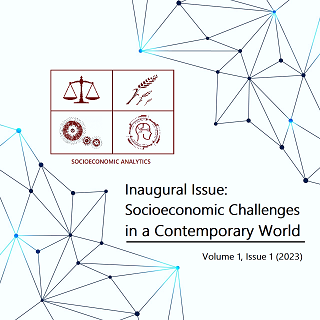Applying spatial decision support for maternal mortality analysis in a Brazilian state
DOI:
https://doi.org/10.51359/2965-4661.2023.259360Keywords:
Spatial Decision Support Systems, decision-making, public health, maternal mortality, Pernambuco, BrazilAbstract
The interface between Decision Support Systems (DSS) and Geographical Information Sys-tems (GIS) generates Spatial Decision Support Systems (SDSS) which aid in the deci-sion-making process, particularly in situations where spatial attributes play a pivotal role in achieving accurate conclusions. By integrating conventional decision criteria with spatial crite-ria and visualization through the adoption of SDSS and geographic information systems tech-nologies, a comprehensive analysis is ensured. The primary aim of this research is to exemplify an application of SDSS to support analyses and decisions on a specific issue in Public Health. The focus lies on assessing cities within the state of Pernambuco (Brazil) that exhibit the high-est rates of maternal mortality. This approach promises to offer valuable insights and aid in making informed decisions to address critical maternal health issues in the region.References
Alves, S.V. (2007). Maternal Mortality in Pernambuco, Brazil: What Has Changed in Ten Years? Reproductive Health Matters, 15(30), 134–144. https://doi.org/10.1016/S0968-8080(07)30326-1
Carlson, T., York, S., Primomo, J. (2011). The utilization of geographic information systems to create a site selection strategy to disseminate an older adult fall prevention program. The Social Science Journal, 48(1). https://doi.org/10.1016/j.soscij.2010.09.002
Clements, A.C. a, Reid, H.L., Kelly, G.C., Hay, S.I. (2013). Further shrinking the malaria map: How can geospatial science help to achieve malaria elimination? Lancet Infectious Diseases, 13(8), 709–718. https://doi.org/10.1016/S1473-3099(13)70140-3
Coffee, N., Turner, D., Clark, R.A., Eckert, K., Coombe, D., Hugo, G., Van Gaans, D., Wilkinson, D., Stewart, S., Tonkin, A. A. (2012) Measuring national accessibility to cardiac services using geographic information systems. Applied Geography, 34, 445–455. https://doi.org/10.1016/j.apgeog.2012.01.007
de Carvalho, V.D.H., Nepomuceno, T.C.C., Poleto, T., Costa, A.P.C.S. (2022) The COVID-19 Infodemic on Twitter: A Space and Time Topic Analysis of the Brazilian Immunization Program and Public Trust. Tropical Medicine and Infectious Disease, 7(12), 425. https://doi.org/10.3390/tropicalmed7120425
de Carvalho, V.D.H.C., Barbirato, J.C.C, Cirilo, J.V.A., Poleto, T. (2016). Uma Me-todologia para Sistemas Espaciais de Apoio à Decisão Aplicados à Gestão da Educa-ção Pública. In: Barbirato, G.M., Rodrigues da Silva, A.N., Souza, L.C.L., Ramos, Rui A.R., Rodrigues, D.S., Barbosa, R.V.R., Barbirato, J.C.C. Anais do 7º Congresso Luso-Brasileiro para o Planejamento Urbano, Regional, Integrado e Sustentável. Ma-ceió: Viva Editora. https://fau.ufal.br/evento/pluris2016/files/ANAIS%20PLURIS%202016.pdf
de Lima, L.M.M., de Sá, L.R., Macambira, A.F.U.S, Nogueira J.A., Vianna R.P.T, de Moraes, R.M. (2010). A new combination rule for Spatial Decision Support Systems for epidemiology. International Journal of Health Geographics, 18, 25. https://doi.org/10.1186/s12942-019-0187-7
Hare, T.S., Barcus, H.R. (2007). Geographical accessibility and Kentucky’s heart-related hospital services. Applied Geography, 27(3-4), 181–205. https://doi.org/10.1016/j.apgeog.2007.07.004
Horita, F.E.A, de Albuquerque, J.P., Degrossi, L.C., Mendiondo, E.M., Ueyama, J. (2012) Development of a spatial decision support system for flood risk management in Brazil that combines volunteered geographic information with wireless sensor net-works. Computers & Geosciences, 80, 84–94. https://doi.org/10.1016/j.cageo.2015.04.001
İnanır, A., Dogan, H.M., Çeçen, O., Dogan, C.N. (2013). Spatial modelling of rheu-matoid arthritis in Turkey by geographic information systems (GIS). Rheumatology International, 33, 2803–2810. https://doi.org/10.1007/s00296-013-2818-9
Joyce, K. (2009). “To me it’s just another tool to help understand the evidence”: Pub-lic health decision-makers’ perceptions of the value of geographical information sys-tems (GIS). Health & Place, 15(3), 831–840. https://doi.org/10.1016/j.healthplace.2009.01.004
Kauhl, B., Pilot, E., Rao, R., Gruebner, O., Schweikart, J., Krafft, T. (2015). Estimat-ing the spatial distribution of acute undifferentiated fever (AUF) and associated risk factors using emergency call data in India. A symptom-based approach for public health surveillance. Health & Place, 31, 111–119. https://doi.org/10.1016/j.healthplace.2014.11.002
Li, Y., Shen, Q., Li, H. (2004). Design of spatial decision support systems for property professionals using MapObjects and Excel. Automation in Construction, 13(5), 565–573. https://doi.org/10.1016/j.autcon.2004.04.004
Little, J.D.C. (1970). Models and Managers: The Concept of a Decision Calculus. Management Science, 16(8), B–466–B–485.
Malczewski, J. (2006). GIS‐based multicriteria decision analysis: a survey of the lit-erature. International Journal of Geographical Information Science, 20(7), 703-726. https://doi.org/10.1080/13658810600661508
Nepomuceno T.C.C., Orisini L.P., de Carvalho V.D.H., Poleto T., Leardini C. (2022a). The Core of Healthcare Efficiency: A Comprehensive Bibliometric Review on Fron-tier Analysis of Hospitals. Healthcare, 10(7), 1316. https://doi.org/10.3390/healthcare10071316
Nepomuceno, T.C.C., de Carvalho, V.D.H., Nepomuceno, K.T.C., Costa, A.P.C.S. (2023). Exploring knowledge benchmarking using time-series directional distance functions and bibliometrics. Expert Systems, 40(1), e12967. https://doi.org/10.1111/exsy.12967
Poleto T., Carvalho V.D.H., Silva A.L.B., Clemente T.R.N., Silva M.M., Gusmão A.P.H., Costa A.P.C.S., Nepomuceno T.C.C. (2021). Fuzzy Cognitive Scenario Map-ping for Causes of Cybersecurity in Telehealth Services. Healthcare, 9(11), 1504. https://doi.org/10.3390/healthcare9111504
Poleto T., Carvalho V.D.H., Costa, A.P.C.S. (2017) The Full Knowledge of Big Data in the Integration of Inter-Organizational Information: An Approach Focused on De-cision Making. International Journal of Decision Support System Technology, 9(1), 16-31. https://doi.org/10.4018/IJDSST.2017010102
Simões, P.P., Almeida, R.M.V.R. (2011). Geographic accessibility to obstetric care and maternal mortality in a large metropolitan area of Brazil. International Journal of Gynecology & Obstetrics, 112(1), 25–29. https://doi.org/10.1016/j.ijgo.2010.07.031
Sugumaran, R., DeGroote, J. (2010). Spatial Decision Support Systems Principles and Practices. CRC Press.
Downloads
Additional Files
Published
Issue
Section
License
Copyright (c) 2023 Thiago Poleto, Victor Diogho Heuer de Carvalho, Rodrigo Cleiton Paiva de Oliveira

This work is licensed under a Creative Commons Attribution-NonCommercial-NoDerivatives 4.0 International License.
Authors who publish with Socioeconomic Analytics retain the copyright of their work and agree to license it under a Creative Commons Attribution-NonCommercial-NoDerivatives 4.0 International (CC BY-NC-ND 4.0) license. This means that the work can be shared, copied, and redistributed in any medium or format, as long as it is not used for commercial purposes, and the original work is properly cited. The work cannot be changed in any way or used to create derivative works.










